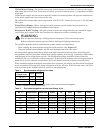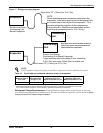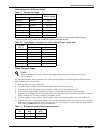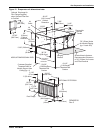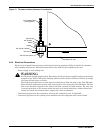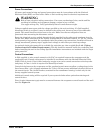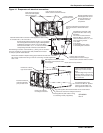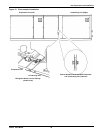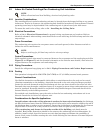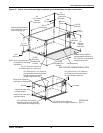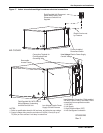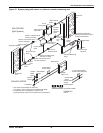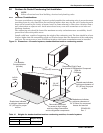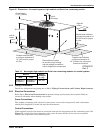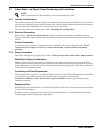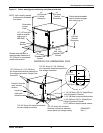
Site Preparation and Installation
27 Liebert
®
Mini-Mate2
™
5.5 Indoor Air-Cooled Centrifugal Fan Condensing Unit Installation
5.5.1 Location Considerations
The centrifugal fan air-cooled condensing unit may be located above the dropped ceiling or any remote
indoor area. If noise is of concern, the condensing unit should be located away from personnel. Normal
operating sound may be objectionable if the condensing unit is placed near quiet work areas.
To mount the unit in the ceiling, refer to 5.4 - Installing the Ceiling Units.
5.5.2 Electrical Connections
Refer to 5.4.4 - Electrical Connections for general wiring requirements and cautions. Refer to
electrical schematic when making connections. Refer to unit serial tag for full load amp and wire size
amp ratings.
Power Connections
The condensing unit requires its own power source and earth ground, with a disconnect switch to
isolate the unit for maintenance.
Control Connections
Field-supplied control wires must be connected between the evaporator and the condensing unit (See
Figure 14 and Figure 17) and the electrical schematic on the units for more details.) Four wires are
required between the evaporator and condensing unit.
5.5.3 Piping Connections
Details for refrigerant loop piping are in 5.4.3 - Piping Connections and Coolant Requirements.
5.5.4 Ducting
Fan operation is designed for 3500 CFM (5947 CMH) at 0.5" (0.12kPa) external static pressure.
General Considerations
Use flexible ductwork or nonflammable cloth collars to attach ductwork to the unit and to control
vibration transmission to the building. Attach the ductwork to the unit using the flanges provided.
Locate the unit and ductwork so that the discharge air does not short circuit to the return air inlet.
Ductwork that runs through a conditioned space or is exposed to areas where condensation may occur
must be insulated. Ductwork should be suspended using flexible hangers. Ductwork should not be
fastened directly to the building structure.
For multiple unit installations, space the units so that the hot condensing unit exhaust air is not
directed toward the air inlet of an adjacent unit.
Considerations for Specific Applications
In applications where the ceiling plenum is used as the heat rejection domain, the discharge
air must be directed away from the condensing unit air inlet and a screen must be added to the end of
the discharge duct to protect service personnel. Locate the air discharge a minimum of 4 feet from an
adjacent wall. Failure to do so may result in reduced air flow and poor system performance.
If the condensing unit draws air from the outside of the building, rain hoods must be
installed. Hood intake dimensions should be the same as the condensing unit duct dimensions. In
addition, install a triple layer bird screen over rain hood openings to eliminate the possibility of
insects, birds, water or debris entering the unit. Avoid directing the hot exhaust air toward adjacent
doors or windows.
NOTE
Follow all national and local building, electrical and plumbing codes.
NOTE
Refer to serial tag for full load amp and wire size amp ratings



